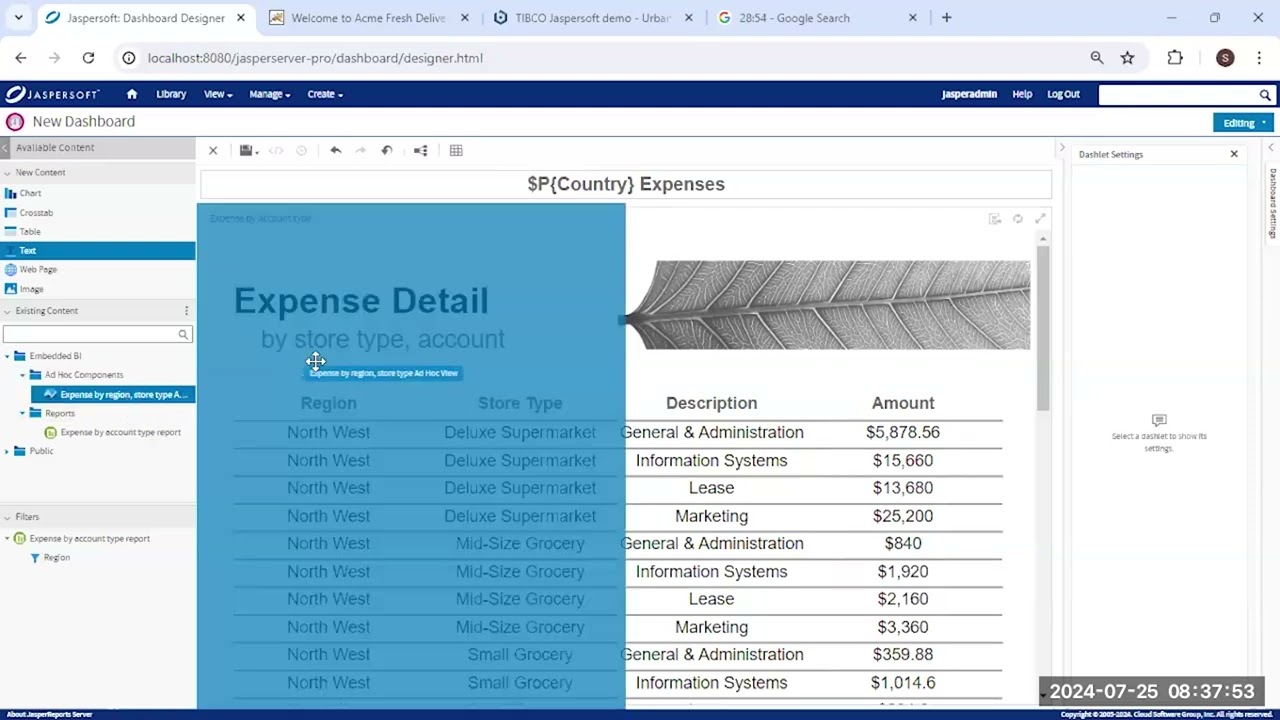Working with data
Connecting to and describing your data
Establishing your data source connection
To connect to your data you will need to create a connection to your data source, typically through a JDBC driver. JDBC data sources are direct connections to your database managed by JasperReports® Server. To create one, you must provide the URL and credentials to access your database, along with any database-specific configuration parameters.
Documentation: How to create a JDBC data source
Creating your first report
Our flexible and robust development environment for creating custom reports leverages the full power of the Jaspersoft reporting engine. Built on the Eclipse platform, the report designer allows you to create sophisticated layouts containing charts, images, subreports, crosstabs, and more.
Documentation: Running or Creating a Simple Report
Creating domains that represent your data
A Domain is a metadata layer that provides a business view of the data accessed through a data source. It presents the data in business terms appropriate to your audience, and can limit access to data based on the security permissions of the person running the report. A Domain in JasperReports Server can be used to create reports, ad hoc views, and Domain topics.
A deeper look: Domains Best Practices (39:57)
Documentation: How to work with the Domain Designer
Visualizing and interacting with your data
Creating Ad Hoc views
JasperReports Server lets you analyze data using chart visualizations or tabular views against predefined Topics, Domains, or OLAP connections. The Ad Hoc report designer is the primary tool in JasperReports Server for analyzing data. To get started, select the Create>Ad Hoc View menu item and follow the workflow. Check out this tutorial on how to create ad hoc views.
Documentation: Working with the Ad Hoc Editor
Building dashboards
With JasperReports Server you can create a dashboard that displays several reports in a single, integrated view. A dashboard can include input controls for choosing the data displayed in one or more dashlets, and custom dashlets that point to URLs for other content. By combining different types of related content, you can create appealing, data-rich dashboards that quickly convey insights and trends.
Documentation: Working with Dashboards
Scheduling your report execution and delivery
Based on a one-off or recurring schedule you configure via UI or GUI, reports can be automatically executed and saved to the repository in up to eleven formats. They can be emailed, sent to FTP, or a file system via API. You have the options to include links to the reports, include the reports as HTML in the body of the email message, or attach the reports. Scheduling these jobs to run in the background or during off hours can reduce the performance impact on the server.
Documentation: Scheduling Reports and Dashboards
Securing your data
Data-level security is a common requirement and restricts content displayed in an Ad Hoc report based on the user’s profile. Data-level security in JasperReports Server is enforced through an XML security file attached to a Domain.
Documentation: Securing data and localizing domains







